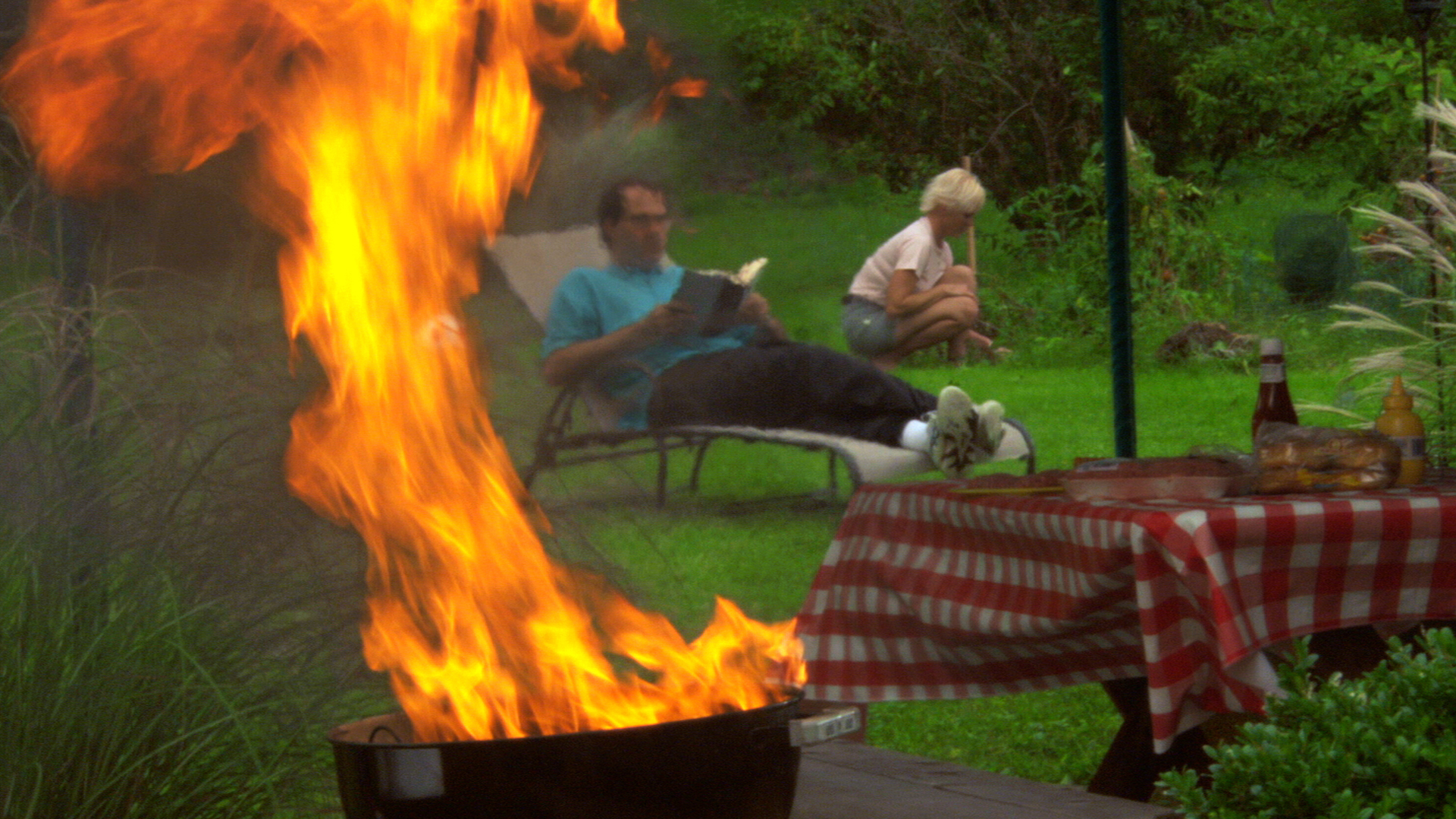
The Euphoria project took a fresh approach to a longstanding problem: substance abuse among teenagers. Instead of yet another short public service announcement telling people what NOT to do, it is a feature-length film about how to get what everyone wants: happiness. And, instead of creating yet another clear and competent educational film that teenagers will sleep through, Euphoria uses dozens of improbable visual metaphors to draw people into connecting some ideas for themselves. These play against narration describing neuroscience, history, and the social sciences related to happiness.
Writer/Director Lee Boot and his company, InfoCulture, contracted the IRC to produce effects for 25 shots that encompassed 8 different scenes. The most challenging was visualizing the brain’s billions of neurons, growing and changing constantly and firing hundreds of times per second. Computer animation was created that appeared to be footage of real neurons, but actually took license to convey the intense, but invisible activity in the brain.
Euphoria as Media Research
The project is iterative media research that follows the logic of scientific research. Several versions were been made over three years. All of the narration was reworked several times, scenes were cut, new sequences were filmed and the score was done twice. Each version was an experiment that was screened for different audiences. Each time, feedback was collected and what was learned was then applied to the next cut. The difference between this and science research is that in the end, empirical data and literature review alone are insufficient to reach audiences in meaningful ways. Successful media is consistent with science, but relies on art and intuition.
Taking Euphoria Public
The film is part of a broad movement that is changing the way films are distributed, in light of the Internet and home theater “revolutions” now making it more difficult for smaller independent films to be viable in the marketplace. Instead of just putting the film in theaters and then selling and renting DVDs, Euphoria was featured in a national series of touring screenings that included workshops for those involved in substance abuse counseling, K-12 education, and those seeking more information about pursuing meaning as a way to achieve happiness.
David Simon, Executive Producer of the HBO series, The Wire, states:
“Euphoria is not only clever, it is profound. In the long and labored history of anti-drug propaganda, what had long been lost was an intelligent assessment of what true happiness actually is and exactly why it can’t be achieved chemically. It is lost no longer. Euphoria makes an argument for unadulterated life that seems simple at first, but in the end, it is the only argument that really matters.”
Awards, Festivals, and Press
- Houston World-Fest, Gold Award for Documentary
- Maryland Film Festival, Official Selection
- Sante Fe Film Festival, Official Selection
Euphoria Screenings and Institutional Use
- Curricular Use In Maryland: Wheaton High School, Montgomery County, Randallstown High School & Landsdowne High School. Howard County Public Health Department (teen substance abuse clinic), Community College of Baltimore County, MD, The Maryland Institute, College of Art, and Johns Hopkins University.
- College Screenings: University of Maryland, Baltimore County, Towson University, Maryland Institute, College of Art, Rochester Institute of Technology, Howard Community College, Georgetown University, Warren Wilson College, Georgetown University, Washington, D.C., Transylvania University, Lexington, KY, University of British Columbia, Vancouver, BC, Canada.
- Professional Association Screenings: National Art Educators Association, Maryland Art Educators Association, Maryland Institute of Alcoholism and Drug Abuse Studies annual meetings in Harford County and Easton, MD as well as summer training workshops at Salisbury University.
Researchers and Creators
Director: Lee Boot
Animation Director: Dan Bailey
Technical and Compositing Director: Brinton Jaecks
Lead Animators: Brinton Jaecks, Eric Smallwood, Dan Bailey, Ryan Zuber, Christina Hung, Ryan Zuber
Project Coordinator: Christina Hung
IRC Systems Support: Mark Robinson
IRC Graduate Research Assistant: Chad Eby
Students
UMBC Interns: Ethan Berner, Ben Bolin, Ryan Cartwright, Andrew Dickman, Tim Farrell, Bryan Fox, Sarah Kendrick, Mike Robins, Sujan Shrestha, Marques Young
Imaging Research Center, UMBC © 2024